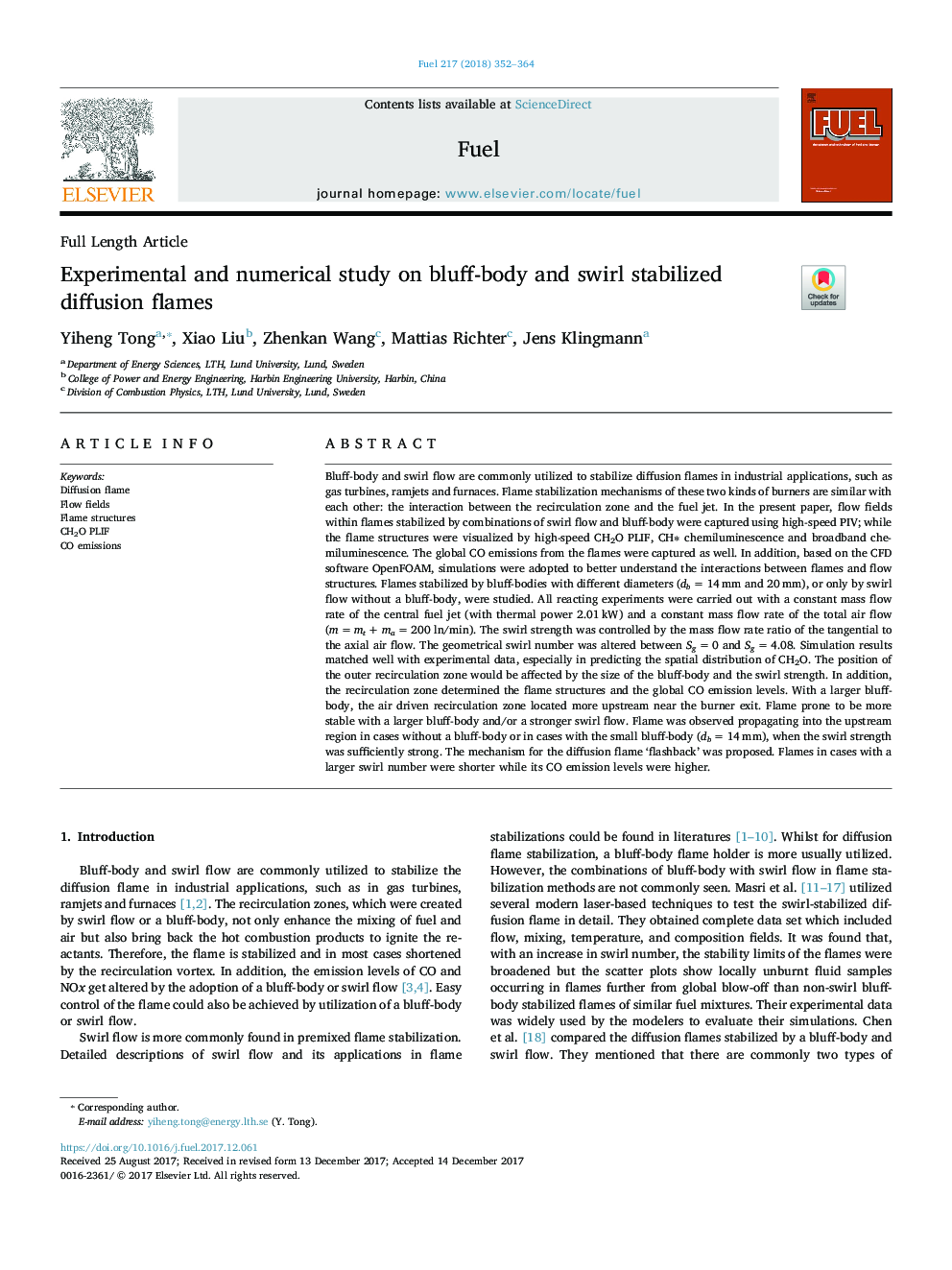| کد مقاله | کد نشریه | سال انتشار | مقاله انگلیسی | نسخه تمام متن |
|---|---|---|---|---|
| 6632025 | 1424947 | 2018 | 13 صفحه PDF | دانلود رایگان |
عنوان انگلیسی مقاله ISI
Experimental and numerical study on bluff-body and swirl stabilized diffusion flames
ترجمه فارسی عنوان
مطالعات تجربی و عددی بر روی شعله های نفوذ ثابتی بدن و غلظت تبدیل شده است
دانلود مقاله + سفارش ترجمه
دانلود مقاله ISI انگلیسی
رایگان برای ایرانیان
کلمات کلیدی
موضوعات مرتبط
مهندسی و علوم پایه
مهندسی شیمی
مهندسی شیمی (عمومی)
چکیده انگلیسی
Bluff-body and swirl flow are commonly utilized to stabilize diffusion flames in industrial applications, such as gas turbines, ramjets and furnaces. Flame stabilization mechanisms of these two kinds of burners are similar with each other: the interaction between the recirculation zone and the fuel jet. In the present paper, flow fields within flames stabilized by combinations of swirl flow and bluff-body were captured using high-speed PIV; while the flame structures were visualized by high-speed CH2O PLIF, CHâ chemiluminescence and broadband chemiluminescence. The global CO emissions from the flames were captured as well. In addition, based on the CFD software OpenFOAM, simulations were adopted to better understand the interactions between flames and flow structures. Flames stabilized by bluff-bodies with different diameters (dbâ¯=â¯14â¯mm and 20â¯mm), or only by swirl flow without a bluff-body, were studied. All reacting experiments were carried out with a constant mass flow rate of the central fuel jet (with thermal power 2.01â¯kW) and a constant mass flow rate of the total air flow (mâ¯=â¯mtâ¯+â¯maâ¯=â¯200 ln/min). The swirl strength was controlled by the mass flow rate ratio of the tangential to the axial air flow. The geometrical swirl number was altered between Sgâ¯=â¯0 and Sgâ¯=â¯4.08. Simulation results matched well with experimental data, especially in predicting the spatial distribution of CH2O. The position of the outer recirculation zone would be affected by the size of the bluff-body and the swirl strength. In addition, the recirculation zone determined the flame structures and the global CO emission levels. With a larger bluff-body, the air driven recirculation zone located more upstream near the burner exit. Flame prone to be more stable with a larger bluff-body and/or a stronger swirl flow. Flame was observed propagating into the upstream region in cases without a bluff-body or in cases with the small bluff-body (dbâ¯=â¯14â¯mm), when the swirl strength was sufficiently strong. The mechanism for the diffusion flame 'flashback' was proposed. Flames in cases with a larger swirl number were shorter while its CO emission levels were higher.
ناشر
Database: Elsevier - ScienceDirect (ساینس دایرکت)
Journal: Fuel - Volume 217, 1 April 2018, Pages 352-364
Journal: Fuel - Volume 217, 1 April 2018, Pages 352-364
نویسندگان
Yiheng Tong, Xiao Liu, Zhenkan Wang, Mattias Richter, Jens Klingmann,
